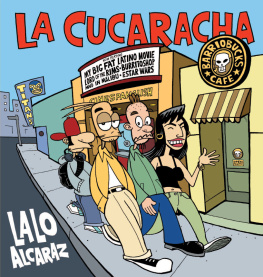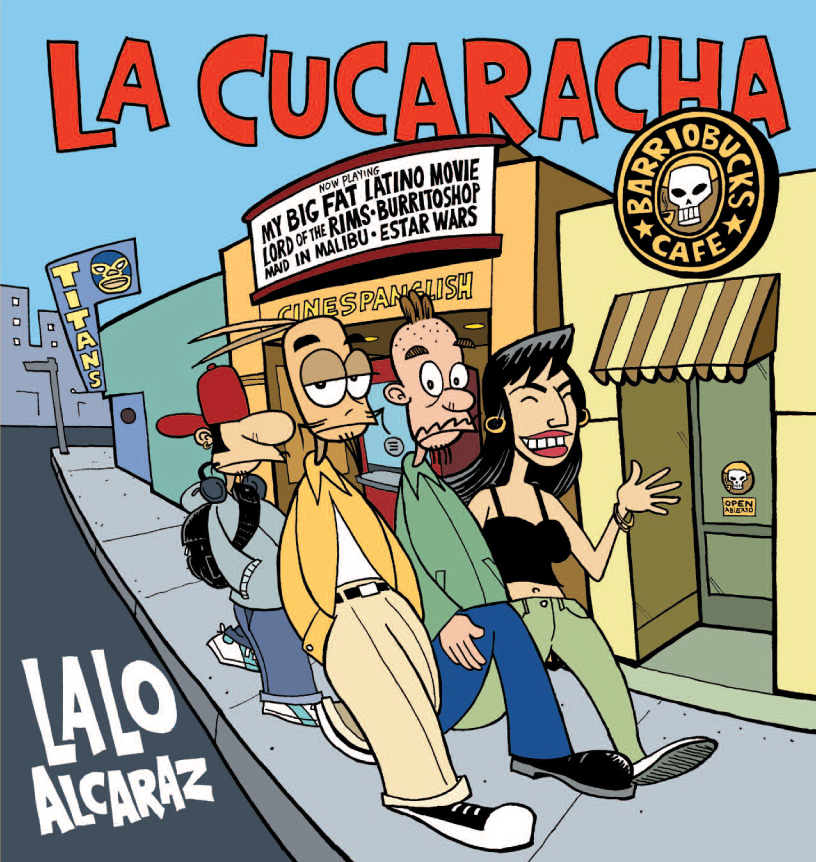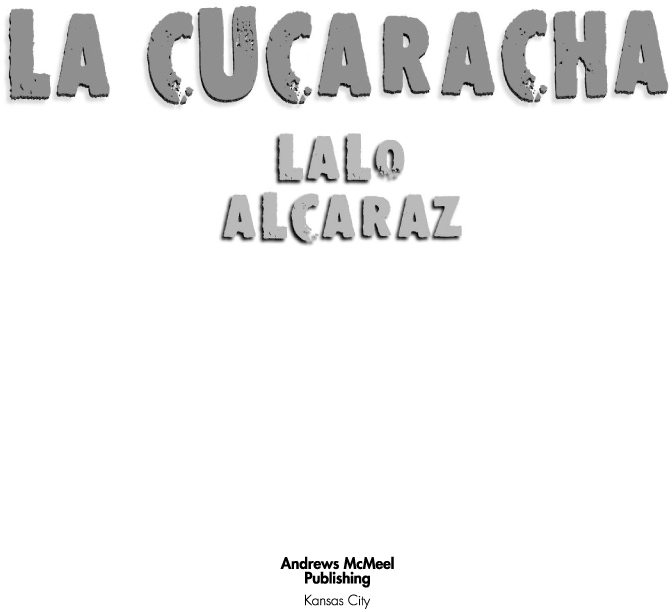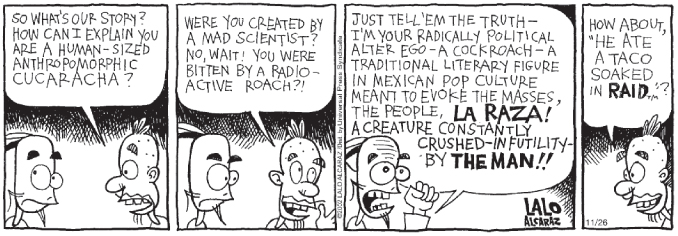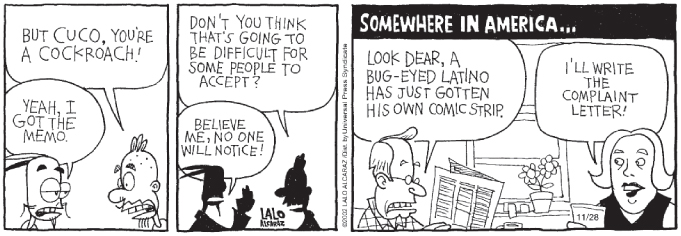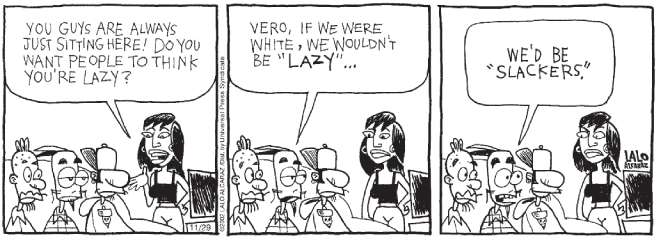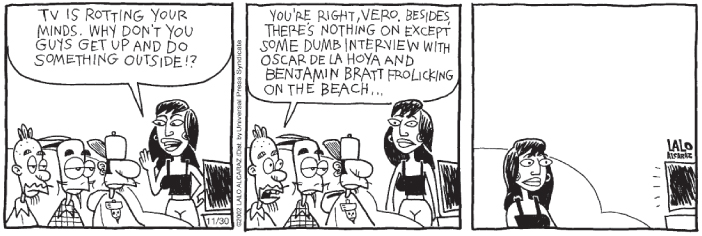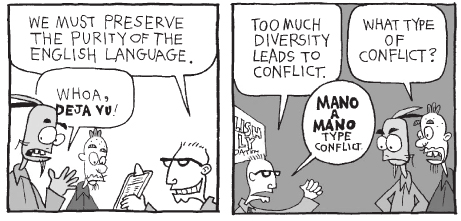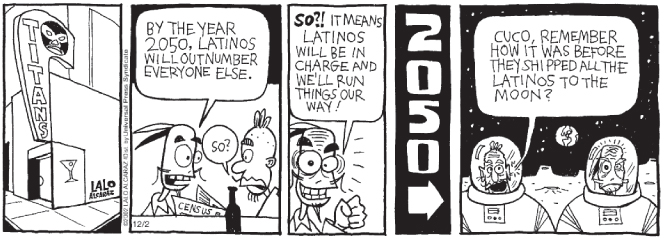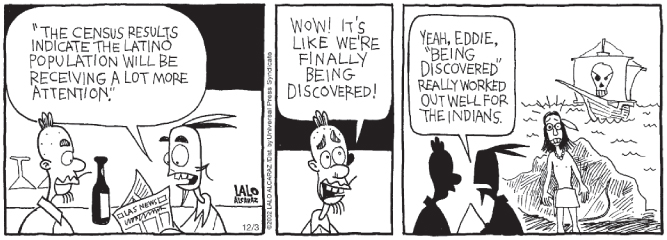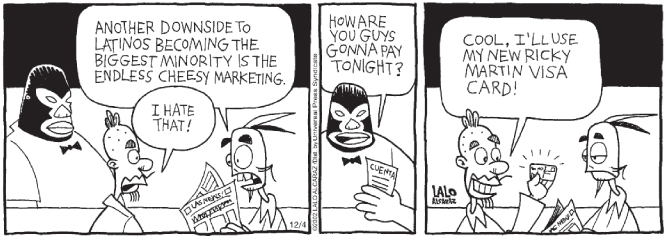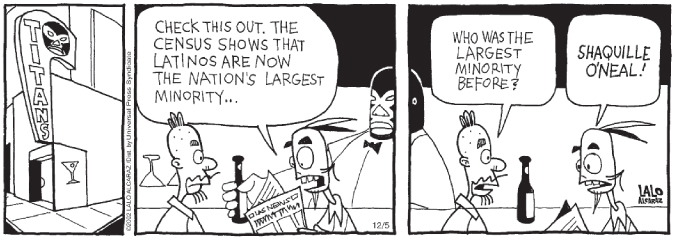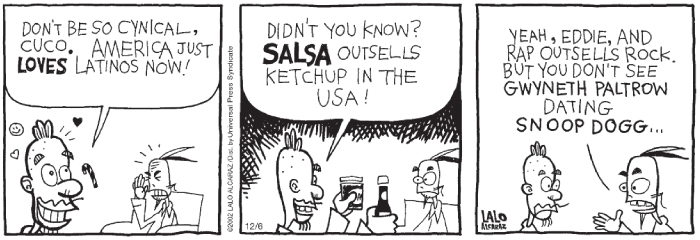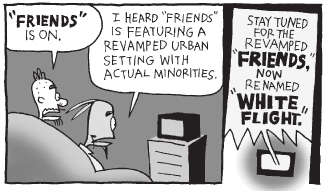To Gus Arriola, Sergio Aragones, Ruis, Los Hernandez Bros, Quino, and all the unsung cartoonistas in Latin America
Introducing La Cucaracha
(This review by comics scholar R. C. Harvey first appeared in the Comics Journal 2002 Review of the Year.)
The latest entry into the lists of deliberately antagonistic comic strips is La Cucaracha , a Latino land mine planted in the Hispanic boondocks, by Lalo Alcaraz, a 38-year-old comedian, writer, illustrator, political agitator, public speaker, and cartoonist. It is no coincidence that Alcarazs strip is syndicated by Universal Press, which also distributes The Boondocks and Doonesbury , as well as Baldo , a strip launched in 2000 about an agreeable Latino teenager and his family by Hector Cant and artist Carlos Castellanos. Looking at this lineup, youd think Universal has a corner on the controversy market. It also distributes Pat Oliphants ferocious editorial cartoon as well as Ted Ralls endeavors.
The comics pages need sharp-edged, culturally critical voices, says Greg Melvin, who is Aaron McGruders and Alcarazs editor at Universal. The comics have to reflect the world is changing.
Alcarazs parents were Mexican natives but he was born and educated in the U.S., spending summers in Mexico, where he was exposed to that countrys prolific cartoon industry, which produces comic book print runs in the millions. At San Diego State University, Alcaraz drew editorial cartoons for the campus paper, graduating in 1987 and going to UC Berkeley to pursue a masters degree in architecture. There, he cofounded a comedy sketch troupe, the Chicano Secret Service, that toured the West Coast 19881996, and a satirical zine, Pocho . Since 1992, he has produced editorial cartoons for the L.A. Weekly , and thats where his cockroach debuted as L.A. Cucaracha.
The unruly insect was featured in the early strips but faded into the background somewhat as the strip slowly transformed itself into a single-panel editorial cartoon. Alcaraz, meanwhile, approached several syndicates with a proposal to do a comic strip based upon the character. In 1998, Universal signed him to a development contract that gave him time and editorial guidance in refining his concept. That The Boondocks was launched at right about that time is probably not coincidental: McGruders strip enjoyed the most successful launch in recent history, strenuously suggesting, I surmise, that something appealing to the growing Latino population in the U.S. might also do well.
Although well-received in various markets, Baldo , Universals first foray in this direction, is too good-natured to swagger up to Hispanic readership the way The Boondocks did to African-American readership everywhere it appeared. La Cucaracha , however, is right on target. (Alcaraz jokingly calls it Doonesbarrio.)
The chief actors in the strips inaugural weeks are Eddie, an easy-going Mexican American (who might be Alcarazs milder alter ego) with whom the title character (aka Cuco Rocha, an anthropomorphic hipster of the Blattidae persuasion, the cartoonists politically radical side) bickers about the state of Latino America; Neto, Eddies tech-savvy bicultural little brother; and Vero (for Veronica), a Latina with her head on straight who might be the only sensible one of the bunch.
Alcarazs drawing style, simple and somewhat angular with an unvarying line, is entirely competent, betraying actual artistic skill (unusual among so many contemporary newspaper strips). He spots blacks nicely, and the strip has a crisp attractive clarity. His images, particularly Veros, sometimes, perhaps unintentionally, evoke Mexican codex. Often (but not always) he devotes most of every panel to the utterances of his characters with the result that much of the humor is verbal, the pictures serving merely to identify the speakers and time comedic revelations.
Alcaraz chose a cockroach as his title character because, he told me, he didnt want to toss away a character that my audience was familiar with.
By using la cucaracha , a traditional literary figure in Mexican pop culture, Alcaraz also strikes a blow for Latino status by turning a negative into a positive.
Said Alcaraz: In the U.S., the cockroach was turned into a racial epithet by Americans (who will swear up and down that there is no racism in this country) against Mexicans, Chicanos, and Latinos alike. I reclaim the cucaracha, he continued [I can almost see him mounting the barricade, waving a banner], which has come to represent the people, the masses, the lumpen, the underdog, and have put him on top. He is defiant and makes the statementYeah, Im a cucaracha! What are you gonna do about it?
Said Alcaraz: Latinos dont ingest enough irony.
He acknowledges a lot of people get on me for criticizing Latinos, but I always say I do it because I care.
But someone had to make a big splash and create a strip that makes a statement, that takes a stand, and has the nerve to disagree with the mainstream. Im here to make an impact.
At the same time, he aims to create images and portrayals of Latinos and other people of color in the media that dont come off as stereotypes, or sunny, Pollyanna-ish idealized caricatures of real people. Latinos are normal people. We are so mainstream its ridiculous. I want to show how we speak Spanglish, how we relate to stuff on TV, how we feel alienated, and how we like watching Friends .
In short, Alcaraz will be lobbing satiric grenades over the fence in both directionsat the American and Latino mainstreams.

